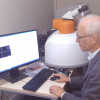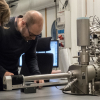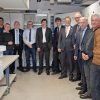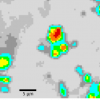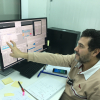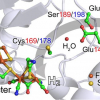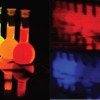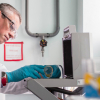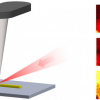Spectroscopy News
Researchers at the National Research Nuclear University MEPhI have shown the importance of using multiple excitation wavelengths when studying complex oxides with Raman spectroscopy.
The use of time-of-flight secondary ion mass spectrometry imaging to examine the skin can reduce the number of animal experiments while providing new opportunities to develop pharmaceuticals and cosmetics.
Lomonosov Moscow State University scientists have invented a new way of doing time-resolved spectroscopy without ultra-fast lasers.
The Bundesanstalt für Materialforschung und -prüfung and Analytik Jena have agreed to cooperate in the research and development of optical spectrometry in the area of elemental analysis.
AGLAÉ is the only particle accelerator in the world dedicated to studying heritage objects. Now improvements in automation and detector sensitivity have been introduced.
Raman imaging can now produce images of brain tissue that is affected by Alzheimer’s disease. The images include the surrounding areas, which may already be showing changes.
The SESAME light source in Jordan has seen First Monochromatic Light through the XAFS/XRF spectroscopy beamline.
Nuclear resonant vibrational spectroscopy, a new X-ray spectroscopy technique has been used to study enzymes that can produce hydrogen gas, the understanding of their reactions could be important in developing a clean-fuel economy powered by hydrogen.
New office expansion enables Rigaku to grow in Europe with well-equipped application development and demonstration facility.
A new colour image sensor with red-sensitive, blue-sensitive and green-sensitive colour sensors stacked on top of each other instead of being lined up in a mosaic pattern could allow image sensors with unprecedented resolution and sensitivity to light to be created.
SCIEX Diagnostics has formed a joint venture with Zhejiang Dian Diagnostics to produce in vitro diagnostic reagents for the SCIEX Triple Quad™ 4500MD LC-MS/MS system.
The Jena-Davis (JEDIS) Alliance of Excellence in Biophotonics has been established, designed to promote North American–German cooperation on research and development in the field of biophotonics.
Enamelled drinking glasses and popular merchandise can contain potentially toxic levels of lead and cadmium, a study has shown.
Whilst serial numbers erased from metal can be recovered, it has proved impossible to do so for polymers. Now, Raman spectral imaging offers a way.
The European Space Agency’s Rosetta probe became the first spacecraft to orbit the nucleus of a comet and later land on its surface. Its close-up studies of the comet using the on-board mass spectrometer continue to yield scientific insights.
Researchers from Brown University, Rhode Island, USA, have demonstrated a way to use terahertz spectroscopy on the nanoscale.
Observing the crucial first few femtoseconds of photochemical reactions requires tools typically not available in the femtochemistry toolkit. Such dynamics are now within reach with the instruments provided by attosecond science. In a study published in Nature Communications, researchers from Max Born Institute for Nonlinear Optics and Short Pulse Spectroscopy (MBI) characterise one of the fastest internal conversion processes in a molecule studied to date.
Mass spectrometry can provide varied information from fingermarks and is close to use in the UK courts.
Scientists from the Max Planck Institute of Quantum Optics, using high precision laser spectroscopy of atomic hydrogen, have confirmed the surprisingly small value of the proton radius determined from muonic hydrogen.

